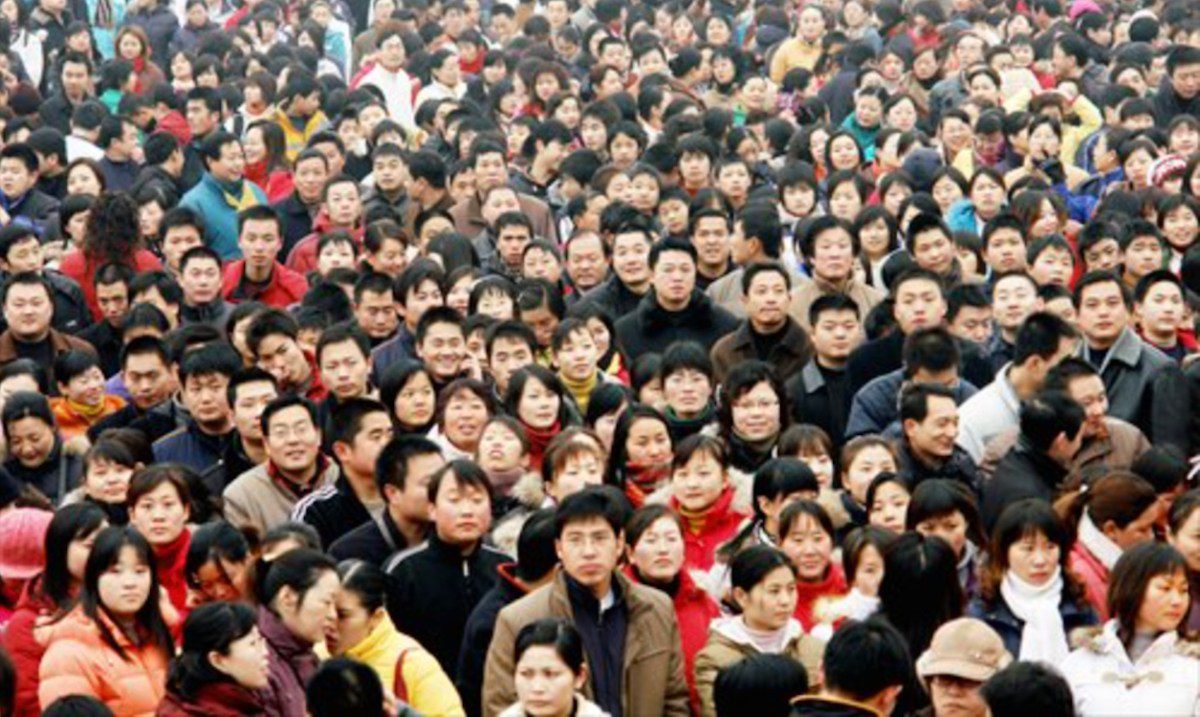Global Courant 2023-04-25 14:02:19
World media is abuzz with the United Nations State of World Population 2023 report released this month. declare India the most populous country in the world.
Equal attention has been paid to the People’s Republic of China experiencing its first-ever population contraction over the past six decades and how the older population will do to overtake the working-age population by 2080 profound effect on everything in China, from the economy to the legitimacy of President Xi Jinping.
Some blame the decline of China’s population on the one child policy imposed during the reign of Deng Xiaoping in the early 1980s. That policy was eventually abolished in 2015, but some expect that the current population decline will lead to a total collapse of China, in political, economic and demographic terms, leading to unprecedented global volatility.
Taken together, such reports have sought to highlight the population problem as an additional point of comparison between China and India. Speculation about whether this will be another point of confrontation has seen experts quote Premier from Liqiang reference to China targeting a “talent” dividend to offset the loss of the demographic dividend to India.
Indeed, some television And other media debates have sought to question whether India’s emergence as the next economic powerhouse will drive China’s downfall, presenting this as a zero sum comparison between the two Asian giants.
All this rhetoric calls for a serious refutation, to put things in perspective and to question several basic assumptions in these super-hyped, sensationalist innuendos.
Estimates are preliminary
First and foremost, all these estimates are just that, estimates. Based on expected trends, the above-mentioned UN report concludes that India’s population will surpass China’s this year 2.9 million. This figure, when compared to the combined population of 2.9 billion in China and India, leaves too little room for a margin of error: 0.001% to be exact.
Now compare this to the margin of error in the recent Chinese census. The 2020 census was conducted during the Covid-19 pandemic, with an officially accepted undercount rate of 0.05%. This is well above the aforementioned 0.001% margin of error in forecasting India as the world’s most populous nation.
Second, and more important to remember, China’s population projections do not take into account China’s autonomous regions Hong Kong and Macau, who collectively represent more than 8 million people – far more than the 2.9 million margin to make India the most populous country in the world. Of course, this doesn’t include the 24 million people of Taiwan, which China considers its renegade province.
Third, India was unable to conduct a census during the pandemic. This means that current reliable census figures remain those of 2011, and figures used since then represent broad trend projections that will remain tentative until the next census is conducted. India first postponed the census to 2021 and has since postponed it to 2024.
Devil in the details
As is often said, absolute numbers always lack hidden subtleties that make a real difference. For example, the focus was mainly on the labor force, and it is expected that the labor force in India will be too 900 million. But regardless of the median age of the workforce, as an engine of national economic growth, they can have varying production potential.
Apart from unemployment rates, which also reflect the complex reality of an inflated labor force leaving agriculture, half of this labor force is made up of women. China has an impressive record employment for women even when compared to most developed countries, and it is twice the world average. Compared with from China 72%, from India the participation of women in the labor market is only 29%.
There is also debate over whether India, with the world’s largest labor force, will follow China’s lead in emerging as a new economic powerhouse in the making. Again, there is no reason to believe that India will – or can – follow China’s lead. This is not only because the two have had very different cultures and development models, but also because China started in the early 1990s when the world was just emerging from the Cold War and brief unipolar moment.
China’s economic rise began at a time when manufacturing was still seen as the main driver of economic growth. In comparison, growth rates today are driven by the services sector, especially those led by internet-enabled services and by digital platforms, where India already has good credentials.
India has therefore experimented with combining its demographic dividend with its talent dividend.
Moreover, the fact that India is becoming the most populous nation in the world is not as new as claimed in the above-mentioned media reports. These demographic trends are well known and long in the making. So it is understandable that both China and India have worked to deal with this reality and have taken multiple initiatives to meet the different challenges and opportunities arising from this transition.
On expected lines
Finally the transition went on the expected lines. It is a commonplace that rising wealth, especially as more women enter the workforce, has a direct impact on female birth rates and fertility. The population growth rates of China and India have been slowing since the 1950s.
So just as China experienced a population decline this year, India will also experience a similar decline in the coming years. India’s fertility rate already has that fallen from 5.7 per woman in 1950 to 2.2 per woman today. Only in light of its unprecedented economic boom has China’s population growth slowed faster than India’s.
Similarly, an aging population does not necessarily lead to lower productivity per capita. Infusions of technology, skill development and automation can even make longevity an asset, allowing a trained individual to work longer. Especially with the shift to e-commerce and digital platforms in an increasing number of industries, the correlation between age and production does not hold in the case of advanced countries.
By all estimates, India is undoubtedly destined to surpass China’s population size, but that need not happen this year and should not be seen as a breaking point in their growth and development trajectories or their bilateral comparisons.
Both China and India have always had large populations and a large workforce, which have gradually expanded over the past half century.
If anything, the world will witness the growing global reach of both Chinese and Indian people around the world and how it affects the United States, whose population is barely one-fourth that of China or India.
Follow Swaran Singh on Twitter @SwaranSinghJNU.
Similar:
Loading…








